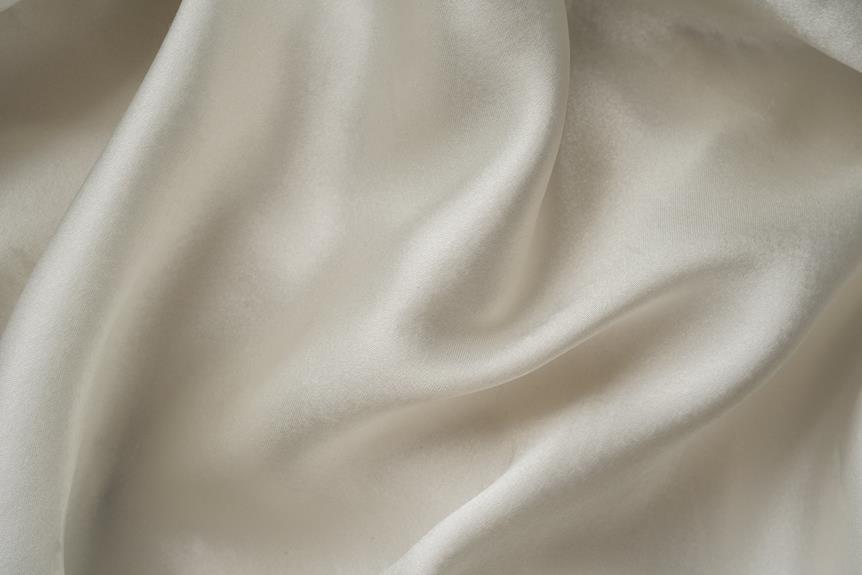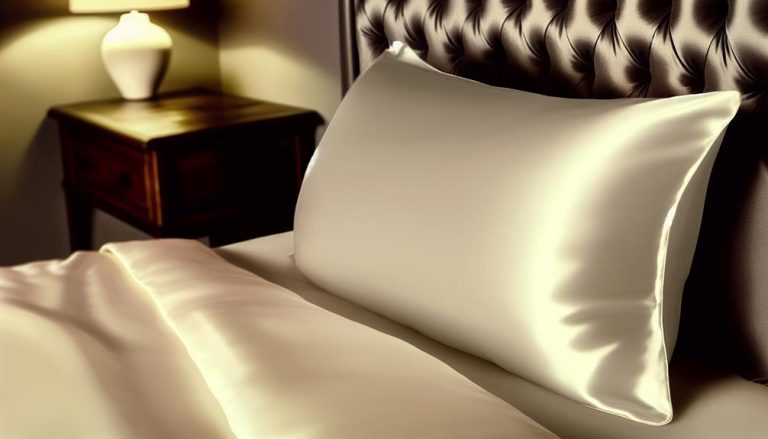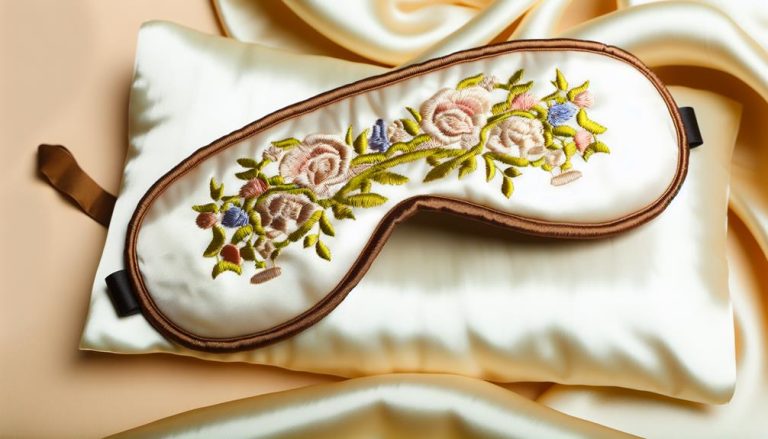Oh, satin and silk, the eternal twins of the fabric world, always mistaken for one another. It’s like confusing a majestic peacock with a run-of-the-mill pigeon.
But let’s not get ahead of ourselves, my curious comrades. Today, we embark on a journey to unravel the mystery that is satin and silk. Are they truly the same, or do they possess hidden secrets that set them apart?
Prepare yourselves, for the answers may surprise you.
The Difference Between Satin and Silk
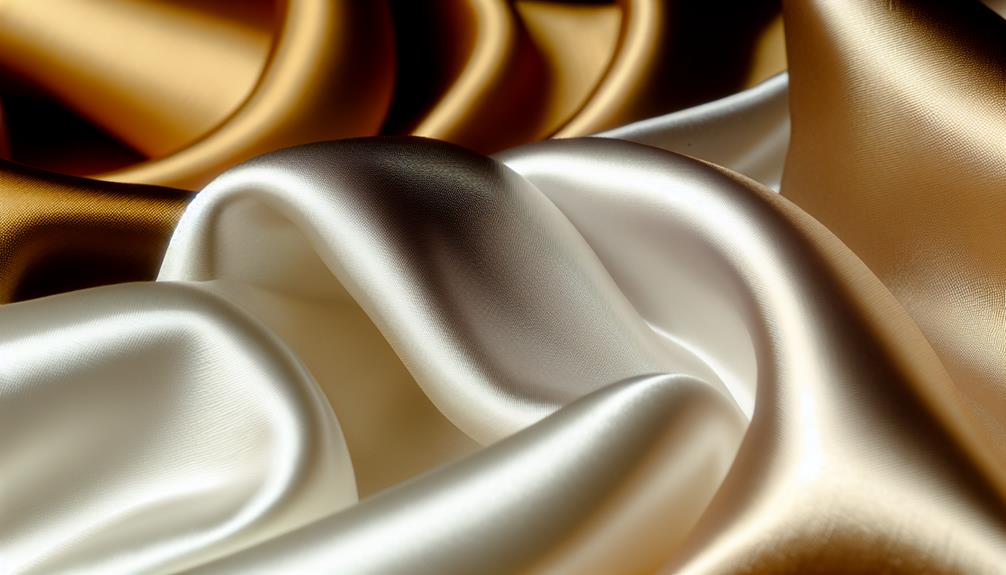
When it comes to choosing the perfect pillowcase, understanding the difference between satin and silk is essential.
Silk pillowcases are made from natural protein fiber produced by silk worms, while satin pillowcases are made from synthetic fabrics like rayon, nylon, or polyester.
Silk has a long tradition as a luxury fabric, originating from ancient China, and it has special properties that benefit both skin and hair. Silk is naturally hypoallergenic, ideal for sensitive skin and allergy sufferers. It also has a cooling effect, helping to regulate body temperature during sleep.
On the other hand, satin pillowcases can have negative effects on the skin, preventing it from breathing and causing irritation.
Benefits of Silk Pillowcases
Silk pillowcases offer a multitude of benefits for both your skin and hair. When you lay your head on a luxurious silk pillowcase, you’re not only treating yourself to a blissful night’s sleep, but also giving your skin and hair the care they deserve.
Silk is known for its natural proteins that help reduce friction, minimizing the formation of fine lines and wrinkles. It also has a cooling effect, regulating your body temperature as you sleep.
Unlike satin, which can trap bacteria and oils, silk pillowcases are naturally hypoallergenic, making them perfect for those with sensitive skin or allergies.
Furthermore, silk pillowcases prevent the absorption of natural oils from your hair, leaving it healthier and more lustrous. So, indulge in the liberating experience of sleeping on a silk pillowcase and wake up feeling refreshed and rejuvenated.
Drawbacks of Satin Pillowcases
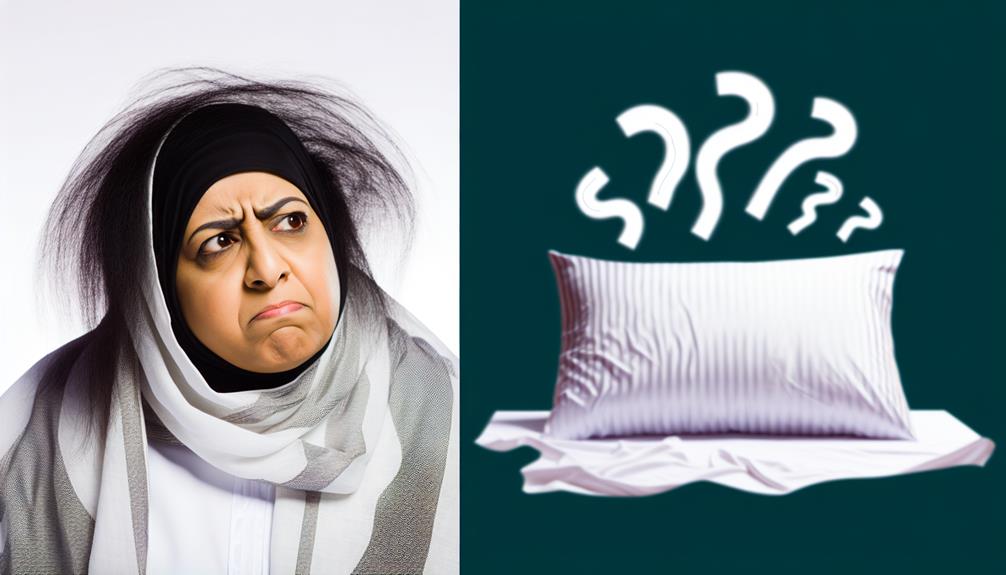
Satin pillowcases, despite their luxurious appearance, come with a few drawbacks that may affect your skin and sleep quality. While they may feel smooth and silky against your skin, satin pillowcases are often made from synthetic fabrics like rayon, nylon, or polyester. These materials lack the breathability of natural fibers like silk, which can prevent your skin from properly ventilating during sleep.
As a result, satin pillowcases can cause skin irritation and overheating, leading to uncomfortable nights and potentially affecting the overall health of your complexion. Additionally, the smooth surface of satin can attract bacteria and oils, increasing the likelihood of acne breakouts.
Understanding the Relationship Between Satin and Silk
After exploring the drawbacks of satin pillowcases, it’s time to unravel the fascinating relationship between satin and its luxurious counterpart, silk.
Satin is often mistaken for silk, but the truth is that satin can be made from synthetic fabrics like rayon, nylon, or polyester. Unless a satin product specifically states that it’s made of silk, it’s most likely synthetic satin. Synthetic satin lacks the sustainability, durability, and benefits of silk.
On the other hand, silk is a natural protein fiber produced by silk worms. It has unique properties that benefit the skin and hair. Silk pillowcases are naturally hypoallergenic, cooling, and promote healthier hair.
When it comes to choosing between satin and silk, opt for 100% mulberry silk for optimal quality and benefits. Liberation seekers, make an informed choice and embrace the luxury and benefits of silk.
Choosing the Right Silk Pillowcase
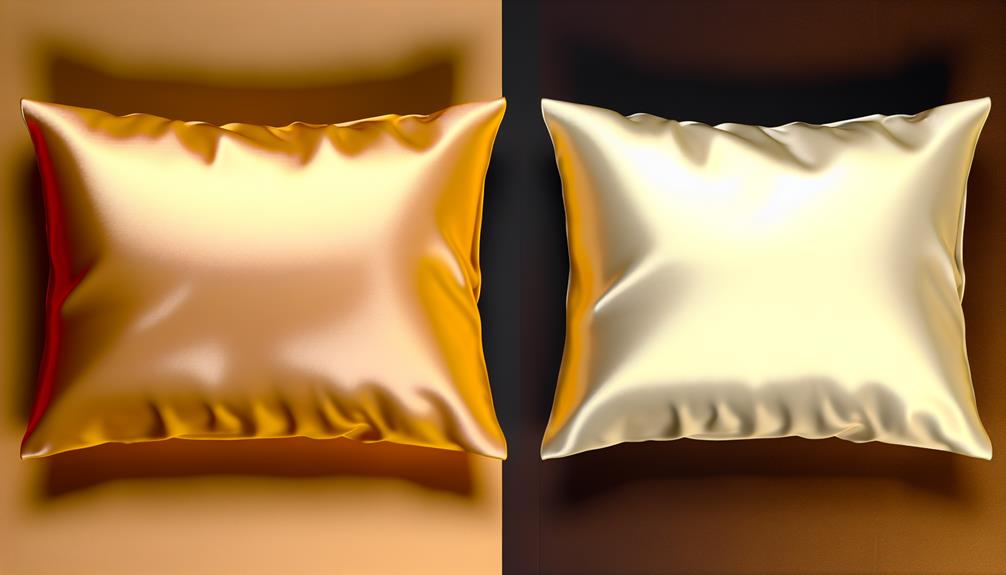
When it comes to indulging in the luxurious benefits of a silk pillowcase, finding the perfect one is essential. The right silk pillowcase can make all the difference in achieving a restful and rejuvenating sleep experience.
Look for a pillowcase made from 100% mulberry silk, like the Ubersilk silk pillowcases. These pillowcases are crafted using all-natural silk fibers, ensuring a soft and smooth surface against your skin. They’re handmade and free of irritants, making them safe for even the most sensitive skin.
Blissy silk pillowcases are also durable and long-lasting, providing you with years of comfort and luxury. So, if you want to wake up feeling refreshed with healthy skin and hair, choosing a high-quality silk pillowcase is a must.
Frequently Asked Questions
What Are the Differences Between Satin and Silk in Terms of Texture and Feel?
In terms of texture and feel, there are noticeable differences between satin and silk.
Silk has a luxurious and smooth texture, with a soft and silky feel against the skin. It has a natural sheen and drapes beautifully.
On the other hand, satin, especially synthetic satin, can have a slippery and shiny texture. It may feel cool to the touch, but it lacks the same level of softness and elegance as silk.
Can Satin Pillowcases Provide the Same Benefits for Hair and Skin as Silk Pillowcases?
Satin pillowcases may seem similar to silk, but they don’t provide the same benefits for hair and skin. Silk is a natural protein fiber that has special properties, like promoting healthier hair and reducing fine lines.
Satin, on the other hand, is made from synthetic fabrics and can actually have negative effects on the skin, such as preventing it from breathing and causing irritation.
To enjoy the desired benefits, it’s important to opt for 100% mulberry silk pillowcases.
Are Satin Pillowcases Suitable for People With Sensitive Skin or Allergies?
Satin pillowcases may not be suitable for people with sensitive skin or allergies. They’re often made from synthetic fabrics like rayon, nylon, or polyester, which can cause skin irritation and overheating during sleep. Satin pillowcases can also attract bacteria and oils, leading to acne breakouts.
It’s important to check labels for 100% silk if you’re looking for the desired benefits. Silk, on the other hand, is naturally hypoallergenic and ideal for sensitive skin and allergy sufferers.
How Can I Differentiate Between Synthetic Satin and Silk Satin?
Differentiating between synthetic satin and silk satin can be challenging. Synthetic satin is made from materials like rayon, nylon, or polyester, while silk satin is made from natural silk fibers. To ensure you’re getting silk satin, check the labels for 100% silk.
Silk offers superior durability and benefits compared to synthetic satin. Look for grade 6A 100% mulberry silk with a thickness of 22-momme for the highest quality. By choosing silk, you’ll enjoy the luxurious feel and numerous benefits for your skin and hair.
Are There Any Disadvantages of Using Silk Pillowcases Compared to Satin Pillowcases?
There are a few disadvantages of using silk pillowcases compared to satin ones.
Silk is a natural fabric that can be more expensive and delicate than synthetic satin. It requires special care and may not be as resistant to wear and tear.
Additionally, silk pillowcases may not have the same cooling effect as satin ones.
However, it’s important to note that silk still offers many benefits for your skin and hair, making it a popular choice for those seeking luxury and comfort.
Conclusion
In conclusion, when it comes to pillowcases, silk and satin aren’t the same. Silk pillowcases offer numerous benefits for the skin and hair, while satin pillowcases, especially synthetic ones, may have negative effects.
If you want the ultimate luxury and advantages, silk is the superior choice. So, indulge yourself with the softness and elegance of silk pillowcases and experience the difference for yourself.
Sweet dreams await!

